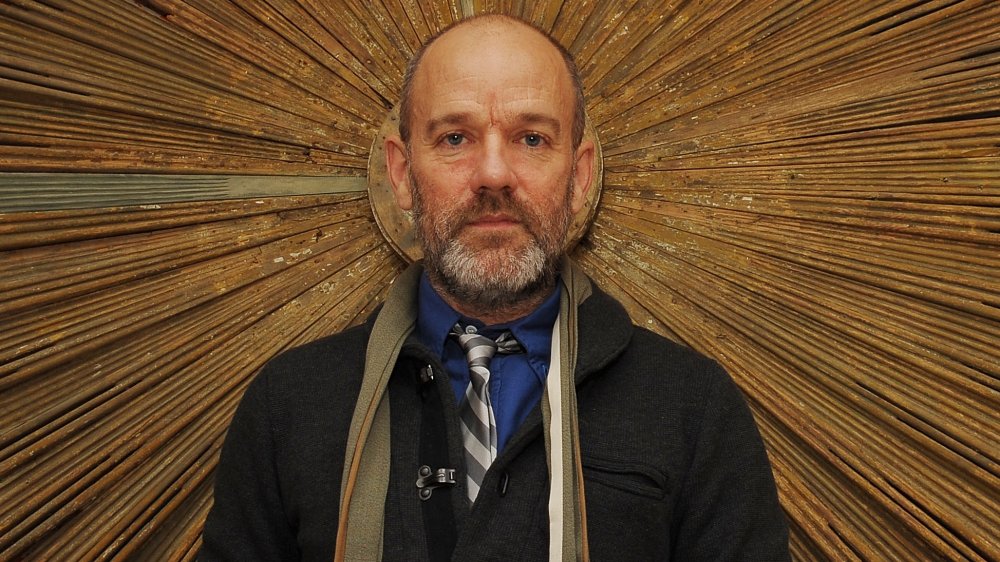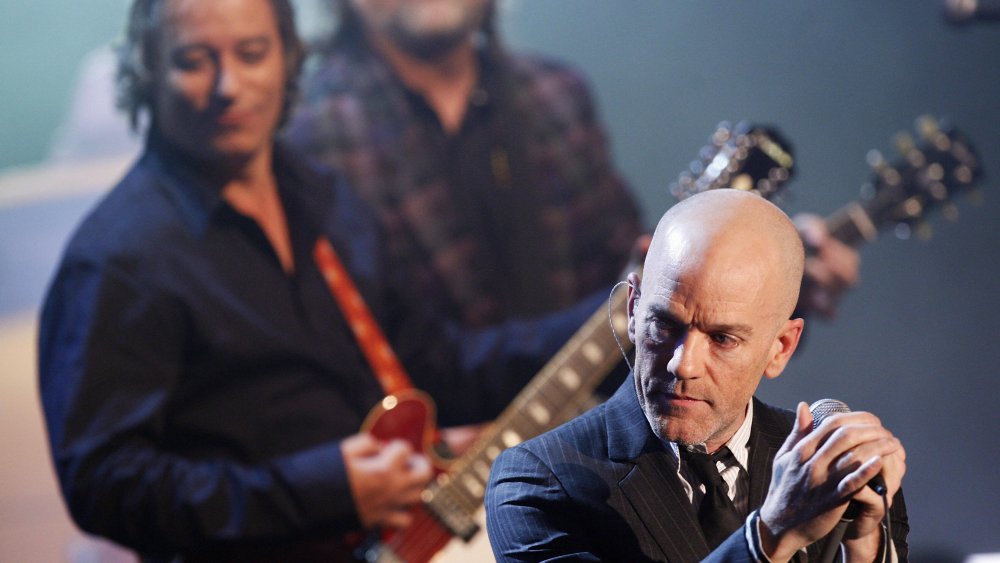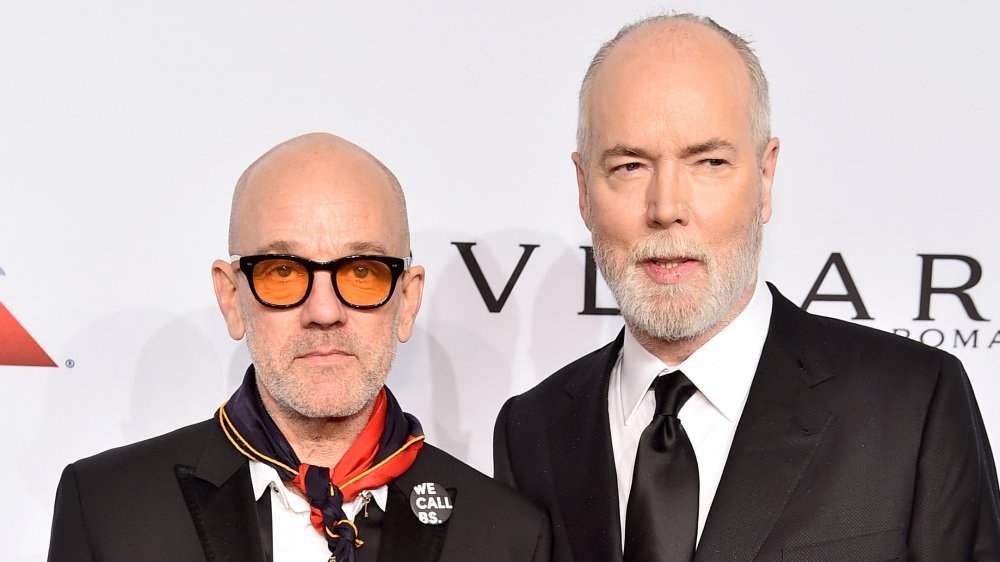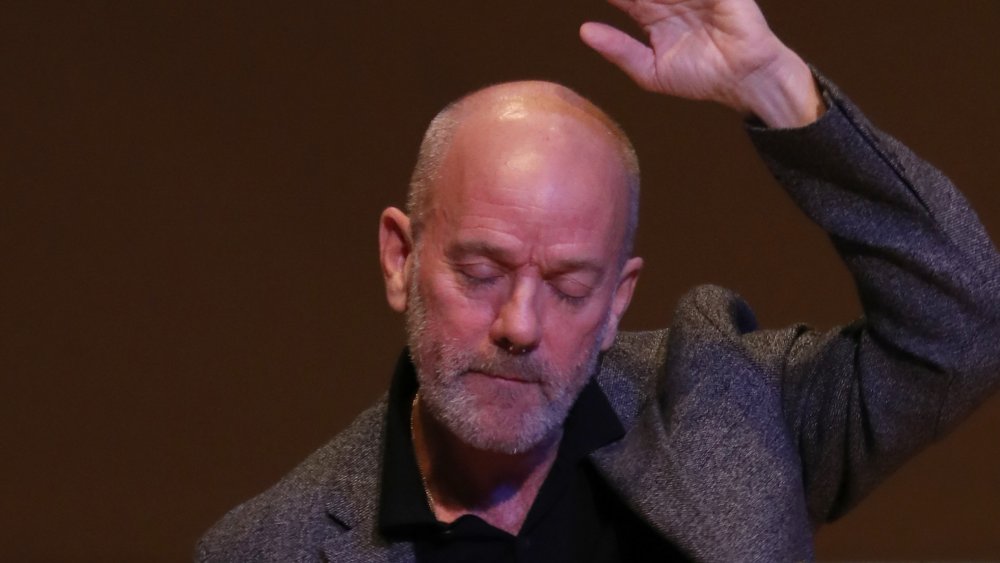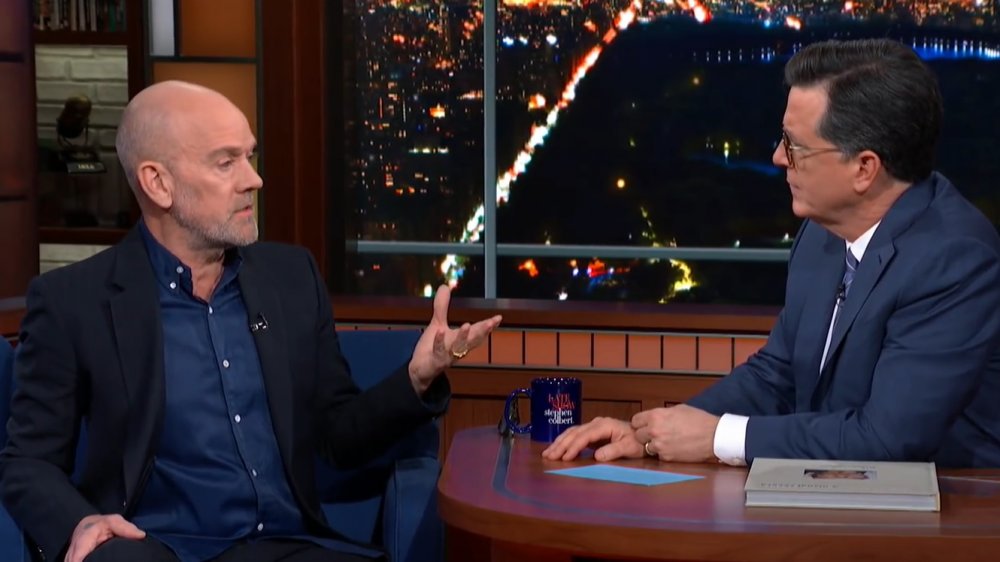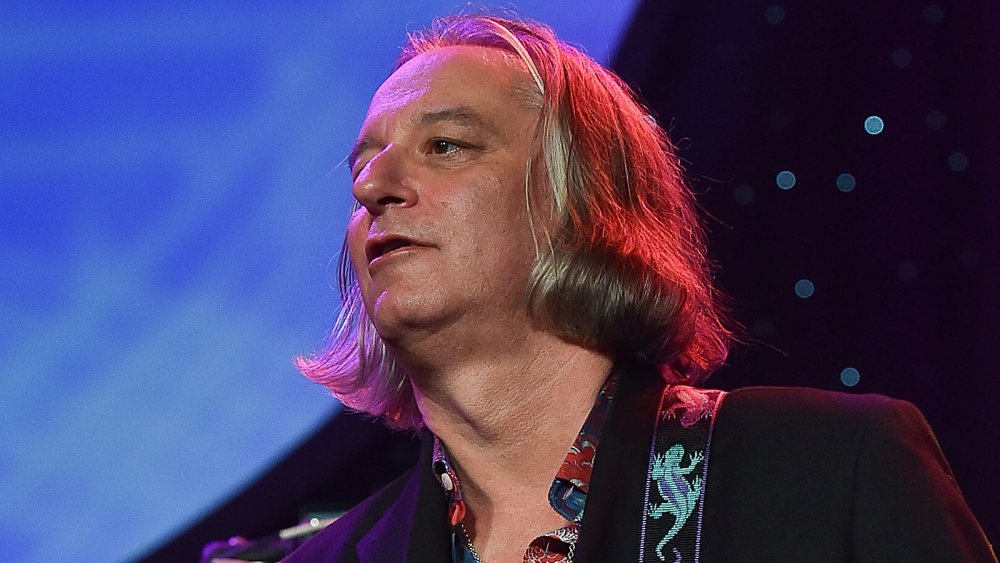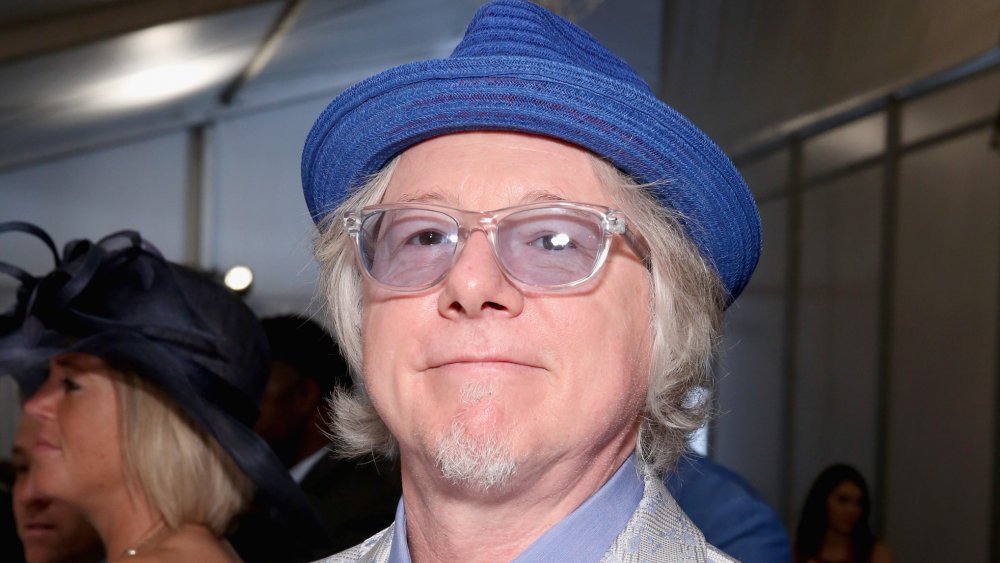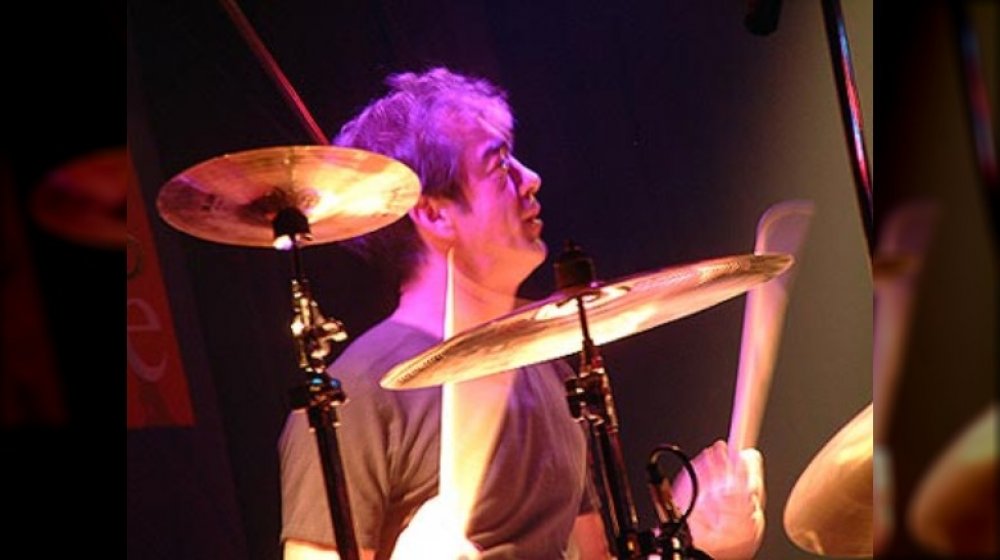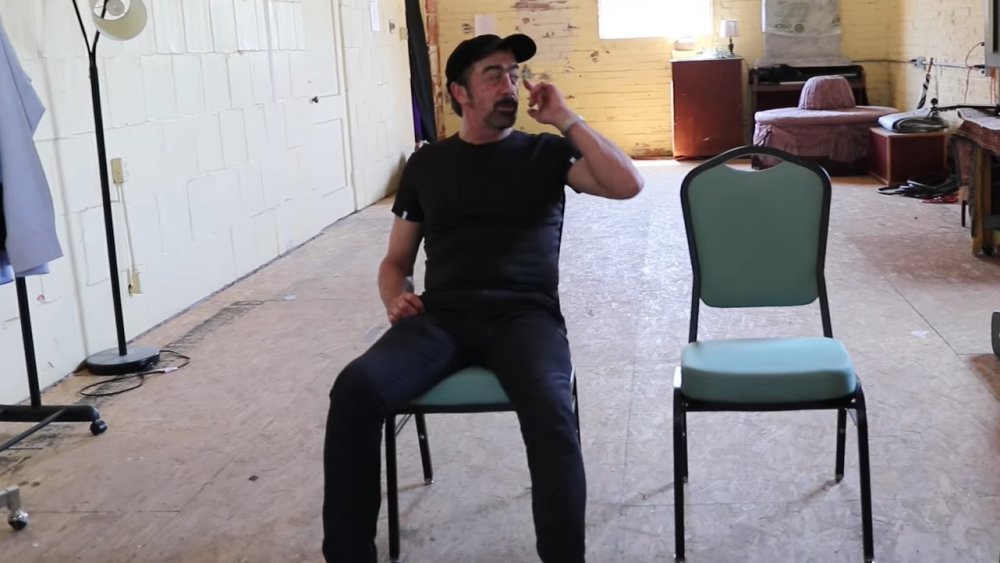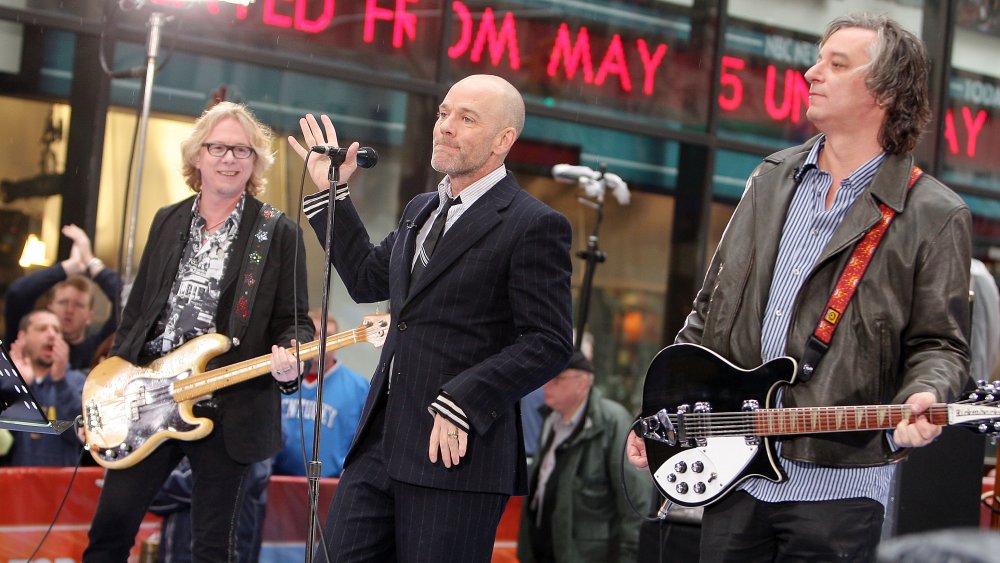Whatever Happened To R.E.M.?
The most famous and successful product of the 1980s music scene in Athens, Georgia, R.E.M. became one of the biggest bands in the world. Not only did Michael Stipe, Mike Mills, Peter Buck, and Bill Berry sell millions of records and make really artsy music videos, they pioneered and popularized a whole new genre of music: college rock (or as it would later be known, alternative rock). Built on jangling guitars, melancholy melodies, and the crushing baritone of Stipe, R.E.M. secured their place in rock history with songs like "Fall on Me," "The One I Love," "Everybody Hurts," "Losing My Religion," and "What's the Frequency, Kenneth?" R.E.M. was even enshrined in the Rock and Roll Hall of Fame in 2007.
R.E.M. dominated alternative radio, MTV, and the charts in the '80s and '90s, but the band eventually ceded its position to other, major left-of-center groups that followed in its wake. So afterwards, what exactly happened to the four musicians who changed music history? Well, here's what the members of this merry band of shiny happy people have been up to over the past few years.
R.E.M. split up in 2011
In March 2011, R.E.M. released its fifteenth studio album, Collapse into Now. Just six months later, the band announced that it was unequivocally, absolutely, and completely done. "As lifelong friends and co-conspirators, we have decided to call it a day as a band," read an announcement on the group's website (via Rolling Stone). "We walk away with a great sense of gratitude, of finality, and of astonishment at all we have accomplished." But why? Why end a band after more than three decades of unbelievable success and musical experimentation? "The time just feels right," bassist Mike Mills added, assuring fans that "there's no disharmony here, no falling-outs, no lawyers-squaring off," and that the decision was made "together" and "amicably." Singer Michael Stipe later told Salon that the group had been winding out since its 2008 tour.
In 2016, guitarist Peter Buck recalled the breakup discussion to Billboard, saying, "We got together, and Michael [Stipe] said, 'I think you guys will understand. I need to be away from this for a long time.' And I said, 'How about forever?' Michael looked at Mike, and Mike said, 'Sounds right to me.' That's how we decided." Buck also chalks up the end to the not wanting to become an over-the-hill rock band that was just playing the hits. "We didn't want to keep doing 20-year-old songs."
Michael Stipe moved into the visual arts
Michael Stipe has always been an artsy guy, and his need and willingness to express himself has never been limited to his substantial musical talents. While still fronting R.E.M., he released a coffee table book about a certain New York rock legend called Two Times Intro: On the Road with Patti Smith. That book prominently featured Stipe's photography, a passion he's had more time to pursue since the demise of R.E.M. And in July 2018, Stipe published Volume 1, a collection of pretty pictures he took between 1980 and 2015.
A year later, he teamed up with Canadian artist and author Douglas Coupland (author of Generation X, who coined that name to describe his and Stipe's generation) to make Our Interference Times: A Visual Record, another collection of provocative visual art. The erstwhile singer also dabbles in sculpture and art installations. In 2018, Journal Gallery in Brooklyn presented Infinity Mirror, which included Stipe's artful arrangement of a bunch of old chairs and shelves. "Each of these is something coming out of the magic decade of the 1970s. I turned ten on January 4, 1970, and turned 20 on January 4, 1980, so it was a teenage decade for me," Stipe told ARTnews. As for what inspired the installation, he saw the shelves online, and as he explained, "They just looked so '70s — then I wondered,' What would happen if I stacked them?'"
Michael Stipe is still making music ... but rarely
As one of the most famous and distinctively voiced frontmen to ever bounce around a stage, a breakout solo career for Michael Stipe seems like an inevitability, and any music he'd release would sell at least moderately well to R.E.M.'s huge fan contingent. Well, one would think that, but in spite of this, Stipe has released extraordinarily little music in his own name since leaving his world-changing band.
In October 2019, eight years into a professional life sans Mills, Buck, and Berry, Stipe released his first single, "Your Capricious Soul," with proceeds going to a climate change activism charity called Extinction Rebellion. Three months later, Stipe released a follow-up, another one-off single called "Drive to the Ocean." He released it on his website on January 4, 2020, his 60th birthday, at a price of 77 cents and pledging to send profits to another climate organization called Pathway to Paris. As of February 2020, Stipe has yet to release an entire album's worth of material.
Yes, that is Michael Stipe in that thing
As the lead singer of R.E.M., Michael Stipe was always the "face" of the band, and he was highly recognizable, what with his clean pate, wiry frame, and wildly fluid dance moves. So it's of little surprise then that Stipe has been the one guy from R.E.M. to go Hollywood, showing up with relative frequency on television and in movies. He's played an exaggerated version of himself twice on the silly and satirical At Home with Amy Sedaris, popped up as a talking head in documentaries about R.E.M. and the band Big Star, along with multiple appearances on both The Colbert Report and The Late Show with Stephen Colbert.
In addition to his on-camera work, Stipe helps other artists get their work made and in front of audiences. In the 1990s, he co-founded an independent film studio called Single Cell Pictures, which produced movies like Being John Malkovich and Velvet Goldmine. In his post-R.E.M. days, Stipe has been active as a producer, helping to get several under-the-radar arthouse movies made, including Me at the Zoo (a sociological documentary about internet celebrities), the romantic anthology Fourplay, the family drama Dust, and En El Séptimo Dia, a piece about undocumented Mexican immigrants living in Brooklyn.
Peter Buck is more active now than when he was in R.E.M.
As R.E.M. headed for a parting of ways, guitarist Peter Buck made a list of everything he'd come to hate about the music industry during his 30-plus years with the band. It was five pages long. He told Rolling Stone that he hated "everything except writing songs, playing songs, and recording them." He no longer wanted to "have anything to do" with the music business. And since 2011, Buck has stuck by that sentiment and has become a prolific independent musician who only does the kinds of things that he wants to do.
For example, he's low-key released five solo albums between 2012 and 2020 on various small record labels and formed a duo called Arthur Buck with singer-songwriter Joseph Arthur. He also plays in the Minus 5, a folksy pop-rock band that sounds a bit like R.E.M., owing to the presence of Buck, as well as frequent R.E.M. collaborator Scott McCaughey. Along with McCaughey, R.E.M. cohort Mike Mills, and Dream Syndicate frontman Steve Wynn, Buck is also a part of the Baseball Project, a supergroup that writes and performs songs just about baseball. That combo released its third album in 2014. Buck has also played guitar on recordings for everyone from Screaming Trees to Rhett Miller to the Monkees, and he's produced Paging Mr. Proust, the 2016 effort by roots-rockers the Jayhawks.
What happened to Mike Mills?
Mike Mills played bass in R.E.M. from its inception in 1980 to its conclusion in 2011, as well as providing the occasional lead or backing vocals to complement Michael Stipe. After R.E.M. dissipated, Mills has been very active in various musical scenes, trying out a lot of different genres beyond crisp and sparse college rock. Alongside official R.E.M. guitarist and occasional R.E.M. sideman Scott McCaughey, he's a member of the national pastime-focused Baseball Project, and he also tours with Joseph Arthur as a part of his backing band.
While playing into the future, Mills also reaches into the past to give respect where respect is due. The '70s power-pop band Big Star was hugely influential to many alternative rock bands, particularly R.E.M., and Mills wrote the liner notes for reissues of the band's first two albums, while also participating in a Big Star cover band concert series.
Then in 2016, Mills ventured far out of his rock 'n' roll wheelhouse when he took a stab at writing classical music. With violinist Robert McDuffie, Mills composed the six-movement Concerto for Violin, Rock Band and String Orchestra, and then toured in support of it, playing mostly in opera houses and fancy music halls. In other words, the man has been keeping busy.
Bill Berry left R.E.M. long ago
For the majority of its history, R.E.M. was a four-piece rock 'n' roll combo, counting official members in Michael Stipe, Peter Buck, Mike Mills, and Bill Berry. But in 1997, Berry resigned his position as R.E.M.'s drummer after nearly two decades with the group. "I'm at a point in my life where my priorities have shifted," Berry said in a statement issued by R.E.M.'s label, Warner Bros. (via Rolling Stone). "I loved my 17 years with R.E.M. but I'm ready to move on to a different phase of my life."
The notion to move on first struck Berry in 1995, after he suffered an aneurysm during an R.E.M. concert and underwent brain surgery. "It first started dawning on me when I was recuperating," Berry told MTV News. "I wasn't specifically thinking about quitting the band, but maybe reassessing my priorities and things I want to do with the rest of my life. Maybe not as much travel, for one." Wanting to leave really hit when the band convened to record Up in early 1997. "I just didn't have that same drive to go in and work like I used to," he explained. The rest of R.E.M., reduced to a trio, opted to soldier on and never officially replaced Berry, using hired guns to sit behind the kit in the studio and on tours.
Bill Berry is living the farm life
When Bill Berry left R.E.M., he didn't just move on to other musical projects — he pretty much retired from rock 'n' roll and the rock 'n' roll lifestyle. Shortly after his departure in 1997, he returned to R.E.M.'s old Georgia stomping grounds, moving to a farm in the aptly named town of Farmington. That's where he's raised his son, Owen, born in 2003.
As Berry doesn't make many public appearances or statements, on the rare occasion that he does record or perform music live, it's newsworthy. In 2000, he appeared on three songs — playing the drums as well as other percussion instruments and keyboards — for Welcome Companions, an album that benefited the Tourette Syndrome Association of Georgia. In September 2019, Berry sat behind the drum kit once again at the historic Fox Theatre in Atlanta for "Revival," a concert that financially aided the restoration of other venerable venues around Georgia. It was also an R.E.M. mini-reunion, with Berry keeping the beat behind guitarist Peter Buck and bassist Mike Mills.
R.E.M. reunited for one night only
At the time of its breakup in 2011, R.E.M. claimed that the split was amicable, and that no lingering personal or legal animosity led to the three long-time collaborators going their separate ways. And in 2017, the band members proved that they all still like each other very much.
According to the Portland alternative weekly Willamette Week, R.E.M. guitarist Peter Buck is a part-time resident of the city, and it's at the Wonder Ballroom where he married fiancée Chloe Johnson on June 1, 2013. The R.E.M. Timeline Facebook page (via Slicing Up Eyeballs) reported that all three of Buck's former band mates attended. All four members of R.E.M. took the stage at some point during the reception, including long-gone drummer Bill Berry, in various combinations. Unfortunately for what were likely many hardcore R.E.M. fans in attendance, at no point did all four friends play music together at the same time.
